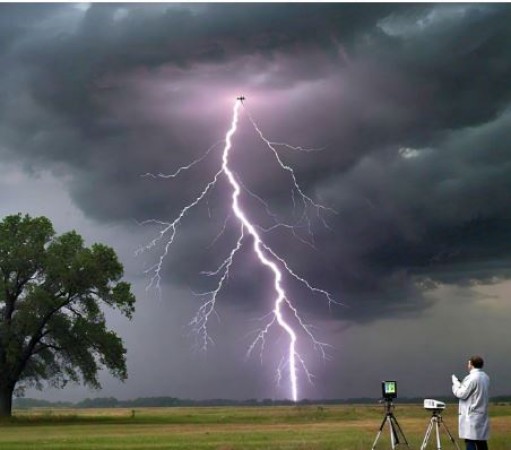
Every year, thousands of people around the world are struck by lightning, resulting in significant injuries and fatalities. In fact, according to the National Weather Service, lightning is responsible for an average of 47 deaths and 400 injuries in the United States alone. But have you ever wondered just how powerful a lightning strike is?
The answer is astonishing: a single lightning bolt can carry up to 1 billion volts of electricity, making it one of the most powerful forces in nature. To put that in perspective, a standard household electrical outlet in the US provides 120 volts of electricity, meaning that a lightning strike is equivalent to approximately 8,333 household outlets.
Lightning is a massive electrostatic discharge that occurs during thunderstorms, formed when there is a buildup of electrical charge between the clouds and the ground or within the clouds. As the charge builds, it eventually becomes too great for the air to resist, resulting in a massive discharge of electricity that we see as lightning.
The voltage of a lightning strike is so immense that it can reach temperatures of up to 50,000 degrees Celsius, five times hotter than the surface of the sun. This heat causes the air to expand rapidly, creating the sound we know as thunder.
But the power of lightning doesn't stop there. A single strike can also generate massive amounts of energy, equivalent to the average annual energy consumption of a small town. In fact, scientists estimate that a single lightning strike contains enough energy to power a 100 watt light bulb for 200,000 hours.
Despite the dangers posed by lightning, scientists are still working to understand the intricacies of this powerful force. Researchers at the University of Florida have developed a device that can simulate lightning strikes in a laboratory setting, allowing them to study the physics of lightning in unprecedented detail.
"We're trying to understand the fundamental physics of lightning," said Dr. Martin Uman, a professor of electrical engineering at the University of Florida. "By studying lightning in a controlled environment, we hope to gain insights into how it works and how we can better protect people and structures from its effects."
As our understanding of lightning grows, so too do our efforts to mitigate its impact. Lightning rods, invented by Benjamin Franklin in the 18th century, are still widely used today to protect buildings and structures from lightning strikes. And new technologies, such as lightning detection systems and advanced warning systems, are helping to save lives and prevent injuries.
In conclusion, lightning is a powerful force of nature that demands our respect and attention. By continuing to study and understand this phenomenon, we can work towards creating a safer world for everyone.
Paytm Introduces 'Health Saathi' Plan for Merchant Partners
iPhone 16 Leaks: All New Models to Feature A18 Chipset
iQOO Z9 Lite 5G to Launch in India: Expected Price, Features, and More